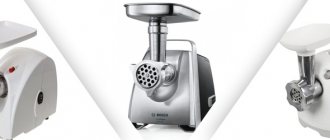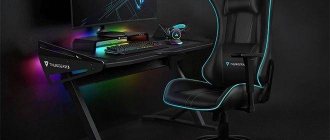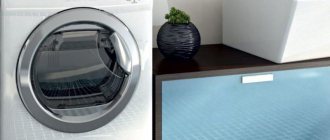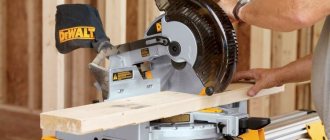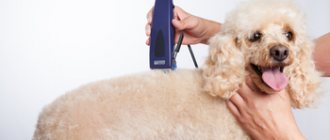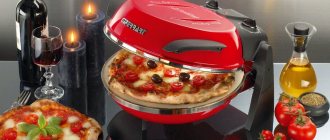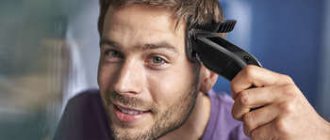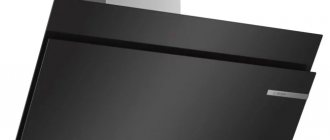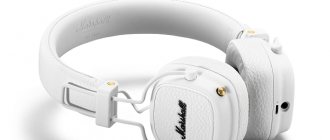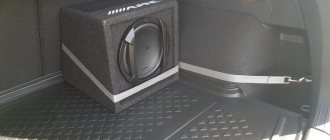In 2021, this company is transnational and famous for the production of high-quality sewing equipment with a large number of functions, rich equipment and a price corresponding to the quality.
To compile a rating of 12 models of sewing machines produced by the Japanese company Brother, an analysis of the statistics of their purchases for 2021 was carried out.
The official test results of the equipment, its technical characteristics, expert opinions and customer reviews were also taken into account.
Rating of the TOP 12 best brother sewing machines of 2021
| Place | Name | Price |
| TOP 3 best Brother sewing machines by price/quality for 2021 | ||
| 1 | Brother Universal 27S | Find out the price |
| 2 | Brother INNOV-IS 10 | Find out the price |
| 3 | Brother Style-60e | Find out the price |
| TOP 3 best Brother sewing machines with overlock | ||
| 1 | Brother Universal 37S | Find out the price |
| 2 | Brother G-20 | Find out the price |
| 3 | Brother Universal 25 | Find out the price |
| TOP 3 best Brother sewing machines with elastic stitch | ||
| 1 | Brother LX-700 | Find out the price |
| 2 | Brother E15 | Find out the price |
| 3 | Brother LS-3125 S | Find out the price |
| TOP 3 best inexpensive Brother sewing machines | ||
| 1 | Brother LS-5555 | Find out the price |
| 2 | Brother M-14 | Find out the price |
| 3 | Brother LX-500 | Find out the price |
Rating of TOP 10 best models
| Place | Name | Price |
| TOP 10 best Brother sewing machines | ||
| 1 | Brother Hanami 37S | 9 000 ₽ |
| 2 | Brother LS-5555 | 6 000 ₽ |
| 3 | Brother INNOV-IS 10 | 24 000 ₽ |
| 4 | Brother LX1400S | 6 000 ₽ |
| 5 | Brother ModernN 39A | 9 000 ₽ |
| 6 | Brother RS-100 | 6 000 ₽ |
| 7 | Brother LX-3500 | 7 000 ₽ |
| 8 | Brother FS-20 | 15 000 ₽ |
| 9 | Brother LS-3125 S | 9 000 ₽ |
| 10 | Brother E20 | 8 000 ₽ |
How to choose a Brother sewing machine in terms of price/quality ratio?
When choosing a sewing machine from the Japanese manufacturer Brother, the buyer needs to pay attention to the following equipment parameters:
- Device type . Depending on the principle of operation, Brother sewing machines are produced in three types:
- Electromechanical models . They are ideal for beginners due to the presence of a programmed advisor that will allow you to set the optimal sewing mode. The functions of sewing on buttons, automatic thread cutting, and making standard and decorative seams will also make operations easier. Adjustment of the speed of work and the stroke and needles of such models is smooth.
- Electronic (computerized) devices . They are programmed with 40 to 150 types of stitches. You can control the sewing process using the LCD display, which displays information using Latin characters. Computerized models are able to work with absolutely all types of fabrics. Also, such equipment is equipped with some very useful functions: automatic basting and threading, processing narrow parts of clothing thanks to a removable sleeve in the body, various types of feet for adjusting the thickness of the fabric, sewing on buttons and fasteners, stitching with double needles, reverse stitching.
- Highly specialized devices . These include embroidery machines, quilt machines for creating quilts, flat stitch sergers, etc.
- Number of operations . For home sewing and repairing clothes, a sewing machine with a number of operations from 10 to 40 is sufficient. When using equipment for sewing clothes for sale, a more powerful device will be required.
- Type of material being processed . If the machine is purchased for stitching thick materials or processing fabrics in several layers, then it is recommended to purchase a model with an adjustable foot and an electronic needle puncture force stabilizer.
- Device power consumption . Machines for home use should have a power of 45 to 80 W.
- Material of manufacture . The body of the sewing machine must be made of stainless metal or impact-resistant plastic. In this case, the device will last a long time. Internal mechanisms should ideally be metal, as they have a very long service life and do not wear out under the influence of mechanical friction, unlike plastic ones.
- Stitch speed . For home use, a sewing speed of 750–1000 stitches per minute (stpm) will be sufficient. For professional sewing, you will need a higher speed - more than 1000 sti/min.
- Shuttle type . They are horizontal and vertical. The former will contribute to a more comfortable process of threading the bobbin, and will also prevent tangling of the lower thread. The second ones coordinate the tension of the thread.
- Equipment . Brother machine models released in 2021 have a fairly rich set of equipment, which includes various types of presser feet, a needle threader, a set of standard needles, double needles, bobbins, scissors, a screwdriver, and a special compartment for storing sewing accessories. In addition, some models include devices for embroidery, creating ruffles, making decorative stitches, quilting and edge finishing.
Popular Brother sewing machines: customer reviews
pros
price, quality, comfort.
automatic needle threader (really a dream),
The automatic thread cutter is also a good idea.
The paws can be changed with one click, there is no need to unscrew anything. The machine does almost everything itself. quite quiet.
The volume is only audible when you are embroidering.
the ability to sew without a pedal.
AS MY HUSBAND SAID, A MACHINE FOR DUMMIES (in the sense that it does everything itself)
Minuses
I wouldn’t call it a disadvantage, it’s just that out of habit it seems uncomfortable, after the tea and vetas.
Slow sewing speed, especially decorative stitches.
At high speed, some lines get hammered into the inside (where the needle goes).
Reverse sewing is generally terribly slow.
Sometimes when you sew heavy fabrics, the bobbin case scrolls (while I was getting used to the machine, I poked a hole in it with a needle), but this is a consumable item, when you sew very thin fabrics, you have to be careful when starting the stitching (i.e. the edge of the fabric). the fabric may become clogged inside.
but it all happens while you get used to it. Now I’ve already gotten the hang of it and know where which fabric needs to be pushed through and which one needs to be pulled up and at what stitches.
A comment
I used to use Veritas, then I switched to Chaika, but when my old lady died (Chaika), the pressing question arose about choosing a machine. At first I was inclined towards the comfort of 40 or 60, but while I was poking around on sites collecting reviews I came across the predecessor of the 950, Brother in 900. I It really resonated with me because I mostly sew for children and either buy patches and appliqués or go through the trouble of making them myself. I hate embroidery, but here is a treasure trove of ideas and options, But there was no 900, so I bought a 950,
Well, I didn’t go hungry, first of all, children’s T-shirts were used, the eldest (he is 5 years old) immediately began asking to embroider him cars, concrete, etc.
so I immediately got into embroidery, or rather, I watched how the machine did it.
When I checked the number and types of stitches, I was even tired, no, not because of the quantity, but because I didn’t participate in the process, I just inserted the thread, the fabric, pressed start and just sat there and watched her do everything for me.
Then, after the delight, there was a comparison with the same seagull, where the speed is simply “AH” and this one, compared to it, is a “sleepy fly.” Then, when I started sewing, it would jam the fabric, then the endless activation of the protection (this is when the needle bends and the machine gets stuck, it says that the protection system is on), this began to irritate me, I began to regret that I bought it, like that kind of money for a machine that can’t do anything. It turned out that I was doing something wrong, for example, the top thread jumped out or was not threaded properly, the machine screams, turns the bobbin case over, but I can’t understand, I took it apart and cleaned it all, and again, when she finally understood and rethreaded it, she even laughed, ..
Well, several months of frequent use have passed, and as a result, my swallow is no longer so capricious, and I’m not freaking out, but as a fact, I enjoy sewing and embroidering on it, I stopped even looking in the direction of all sorts of ready-made appliqués and patches and stickers for fabrics, now I have a lot of different threads (viscose nylon, etc.) a full compilation of drawings, all that remains is to fully understand the embroidery program. WELL, SOMETHING LIKE THIS.
TOP 3 best inexpensive Brother sewing machines
Brother LS-5555
The Brother LS-5555 electromechanical sewing machine is ideal for beginners to master sewing and simple sewing or repairing clothes .
The horizontal type of shuttle will contribute to a more comfortable process of threading the bobbin, and will also prevent tangling of the lower thread.
A modest set of operations is enough to perform blind and elastic stitching, sewing knitwear and overlocking using a double needle.
You can also use a machine to sew zippers into products using a special foot and secure the stitching using the reverse button.
For convenient work with small parts, sleeves and collars, the manufacturer has equipped the machine with a removable sleeve platform.
The stitching speed can be adjusted smoothly for greater precision.
Specifications:
- power consumption - 50 W;
- number of operations - 14;
- stitch length - 4 mm;
- stitch width - 5 mm.
pros
easy setup and use;
compact size and light weight;
silent line.
Minuses
There is no smooth adjustment of stitch length.
Brother M-14
The Brother Universal 37S electromechanical sewing machine is controlled by an electric drive, which is started using a foot pedal measuring 130x90cm .
The built-in horizontal rotary shuttle will ensure stable stitching without skipping stitches and the absence of vibrations during sewing.
For ease of use of the sewing machine, the manufacturer has provided a special compartment in the design for storing sewing accessories, a screwdriver for servicing the machine, a bobbin with automatic thread winding, a set of needles, several types of presser feet (J - zigzag stitch, I - sewing in a zipper, A - sewing buttonholes) and a DVD with detailed instructions for using the machine.
The weight of the sewing machine is relatively light (4.66 kg), so it can be easily transported. At the bottom of the machine there are rubber feet that prevent the sewing machine from sliding on the table surface. The built-in LED lighting will allow you to clearly see the working area of the machine and perform even stitching.
Specifications:
- power consumption - 50 W;
- number of operations - 14;
- stitch length - 4 mm;
- stitch width - 5 mm.
pros
quiet line;
simple functionality;
compact size.
Minuses
non-switchable backlight.
Brother LX-500
The Brother LX-500 electromechanical sewing machine allows you to perform various types of stitching with four modes (zigzag, elastic blind stitch, blind stitch, elastic simple stitch) .
It is ideal for beginners due to its ease of operation and setup for sewing and repairing various clothes.
The “Free Sleeve” function will allow you to remove the sleeve of the machine, which will allow you to process narrow parts of the product . Several types of feet will allow you to perform detailed work: J - zigzag stitch, I - sewing in a zipper, A - sewing buttonholes.
The included bobbin has an automatic thread winding function, which allows you to wind the thread very quickly and without tangling before sewing..
Also, convenient work will be ensured by a bright LED backlight, which will illuminate the work area when stitching in dim lighting.
Specifications:
- power consumption - 50 W;
- number of operations - 14;
- stitch length - 4 mm;
- stitch width - 5 mm.
pros
useful features;
quiet line;
compact size.
Minuses
uncomfortable threading the needle.
Best Brother Sewing Machines
Brother JS-100
Model JS-100 is a computer machine. It is equipped with an LCD display, which contains all the information necessary for sewing. The price of this model is higher than electromechanical machines. The design provides:
- formation of loops automatically in 1 step;
- quick threading from below;
- fast bobbin winding;
- horizontal shuttle;
- spacious extension table;
- "Free sleeve";
- twin needle sewing;
- lighting using dual LED lamps;
- switching the positions of the conveyor combs;
- power - 40 W.
The number of sewing operations is 70. It is possible to customize the device to sew from fabrics of different thicknesses. The machine performs both simple and complex stitches. There is a stitch switch on its body.
Each type of stitch has its own number; it can be seen in the indicator window when selected.
Brother LX1700S
LX1700S is an electromechanical sewing machine. This is a great inexpensive option for helping you restore clothes and create simple things for the home. It is easy to set up, has 17 useful lines and is equipped with:
- horizontal shuttle;
- sewing function in two directions: forward/backward;
- automatic bobbin winding;
- LED lighting;
- buttonhole adjustment;
- "Free sleeve" function.
The horizontal shuttle device operates silently, and it is possible to quickly change the bobbin thread. The machine sews in two directions. The change can be made using the sewing vector change button, which is located on the body.
The LX1700S is equipped with a minimum of:
- universal foot;
- zipper and buttonhole foot;
- three bobbins and a fourth in the shuttle;
- a set of universal needles;
- pedal.
The stitching of medium and thin materials allows the rack of an improved design to be carried out.
Brother INNOV-IS 10
Among the affordable electronic sewing machines for beginners, Brother INNOV-'IS 10 is the best model. Although it is multifunctional, it is easy to use. Performs 16 operations. To set the stitch, just use the switch and display. Changing presser feet is automated.
The main advantages of the machine include:
- presence of LCD display;
- a sufficient range of stitches for beginners;
- simple controls;
- double needle;
- work without pedal;
- the presence of a double needle;
- presence of a sewing advisor.
Judging by the reviews, there are few disadvantages:
- the needles included are not particularly sharp;
- Presser foot pressure is not adjustable.
Brother Universal 17
The machine operates from an electromechanical drive, which drives the flywheel. The device is relatively inexpensive and compact. When you press the foot pedal all the way, you can stitch at a higher speed.
The device is equipped with a device for threading the upper thread. There is a stitch parameter regulator, which makes it possible to create different zigzag seams. The foot can be raised up to 9 mm, so even dense fabric folded in half can be passed through. Number of working seams - 17. Other characteristics:
- shuttle - horizontal;
- needle threader - automatic;
- stitch - 5 mm maximum;
- sleeve platform - available.
Brother Classic 40
Brother Classic 40 is an electromechanical model, ideal for working with knitwear. Elastic stitching fits perfectly on jersey, interlock, and hoodies. The puncture force stabilizer contributes to good quality sewing of dense materials. Characteristics:
- number of operations performed by the machine - 37;
- automatic execution of loops - available;
- stitch parameters - 5 x 7 (length, width, respectively);
- sleeve platform - available;
- automatic thread insertion - available.
The mechanics of the car are reliable, the price is affordable. Operation is smooth and quiet.
Brother X-10
This electromechanical sewing machine went on sale in 2016. It has an expanded range of functions and works with all fabrics. Equipped with a horizontal rotary shuttle, it performs 17 types of stitches. The best option for both sewing and repairing things.
The model consumes 50 W. The speed is adjusted smoothly, the working surface is well illuminated. Sews at a maximum speed of 750 stitches per minute. It is possible to turn off the fabric feeding mechanism. The puncture force is adjusted via an electronic stabilizer.
Disadvantages can be noted:
- Presser foot pressure on fabric cannot be adjusted;
- there is no upper fabric conveyor;
- There is no multi-directional sewing function.
Ease of control allows the Brother X-10 to be used by beginners and experienced sewers.
Brother RS-100
Model RS-100 is an entry-level electromechanical sewing machine equipped with a horizontal hook. Works with all fabrics and makes 14 types of stitches. Ideal option for beginners.
Sewing capabilities of the machine:
- semi-automatic buttonhole sewing;
- stitch width/length - 4 and 5 mm, respectively;
- stitch length is adjustable;
- The stitching is secured using the reverse key;
- double needle work available;
- "Loose Sleeve"
Machine power consumption -66 W. There is a handle for carrying. The design is convenient and compact. The kit includes a set of universal needles, bobbins, 3 feet - universal, for sewing in zippers, for making loops. There is a darning plate.
Brother CX5
The model is equipped with the functionality necessary to perform simple operations. With its help, you can sew in a zipper, repair things, and process seam cuts with a zigzag line.
Reliable mechanics and the presence of a horizontal shuttle allow the mechanisms to operate quietly and smoothly. The presence of a platform for sewing in the circle makes it possible to easily hem trousers and carefully perform other similar operations. Main characteristics:
- number of sewing operations - 2;
- shuttle - horizontal;
- types of stitches - zigzag, straight;
- stitch length - 0.4 cm maximum;
- operating speed - 500 st/m;
- foot lift height - 11 mm;
- lower conveyor - 4-segment;
- engine power - 40 W;
- power consumption - 55 W;
- weight - 7 kg.
Brother M-14
This electromechanical model is available in 14 types of stitches, including:
- straight lines - 6;
- for automatic design of loops - 3.
The remaining lines are zig-zag, for hemming the bottom, for overcasting the edge, for working with fabrics that have special elasticity. To select a specific stitch, you need to use the switch located on the body. There is also a reverse lever here, through which the sewing direction is changed.
The machine is equipped with a horizontal shuttle, LED lighting, and a “Free Sleeve” that allows you to work with products with cylindrical geometry. You can work with fabrics of different textures and densities.
The machine has the following features:
- stitch length - 4 mm;
- width - 5 mm;
- motor power - 50 W.
After watching the video, you can make sure that the machine operates quietly and the bobbin thread is easy to change.
